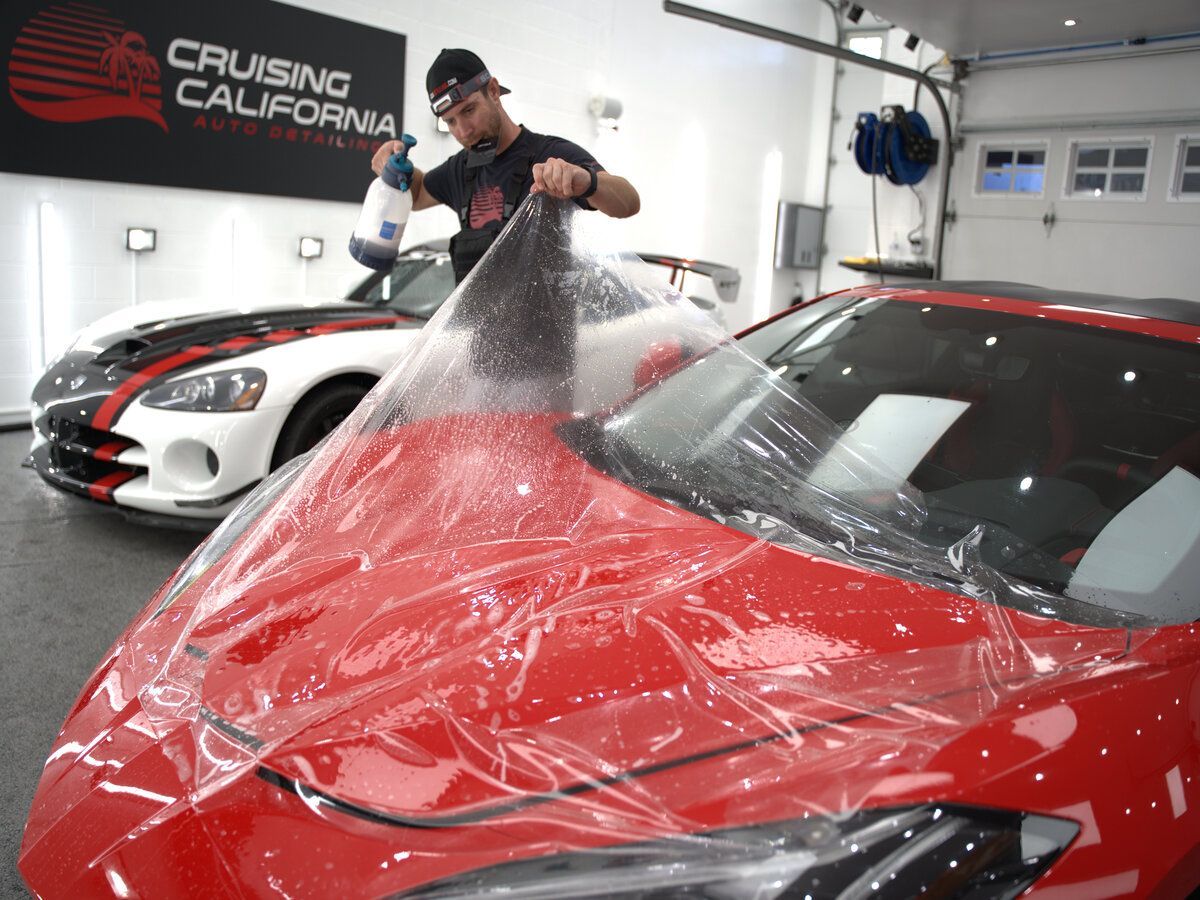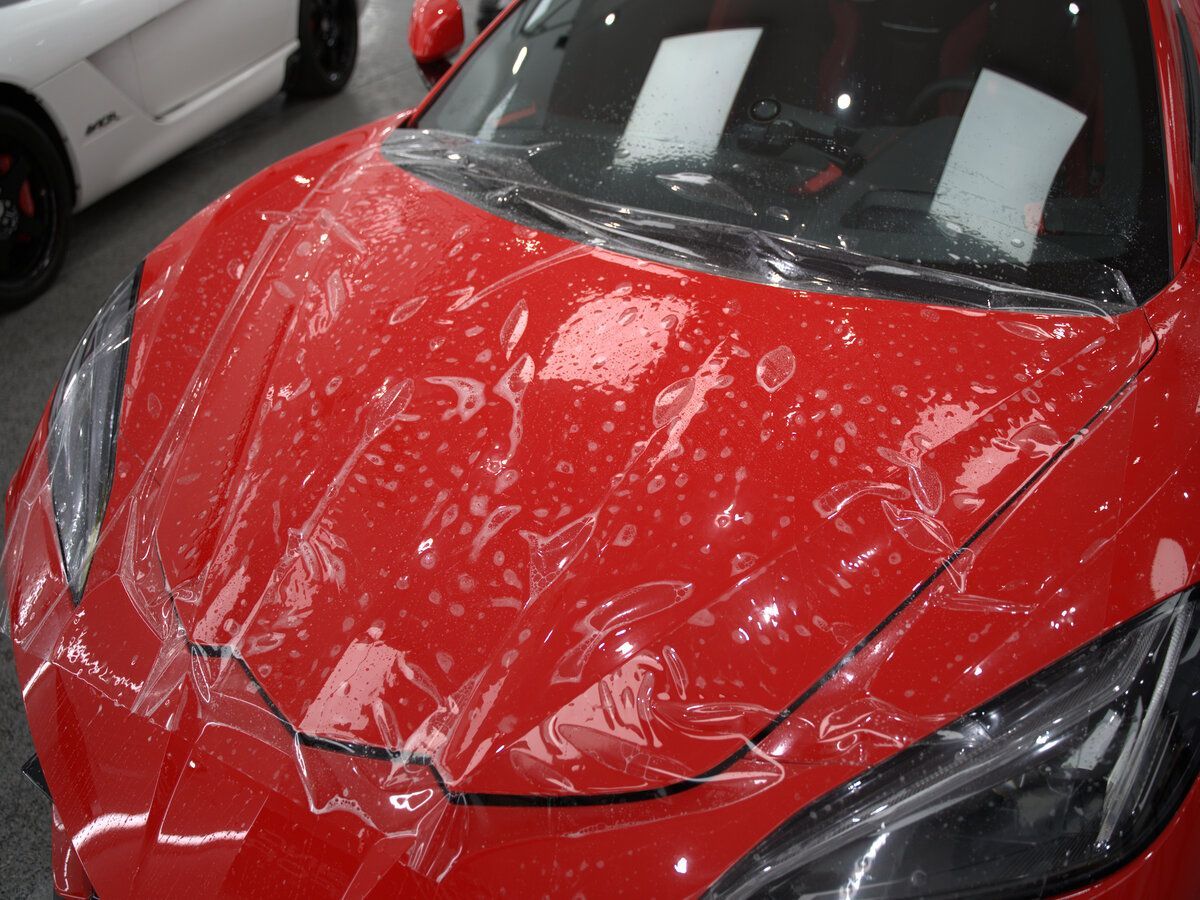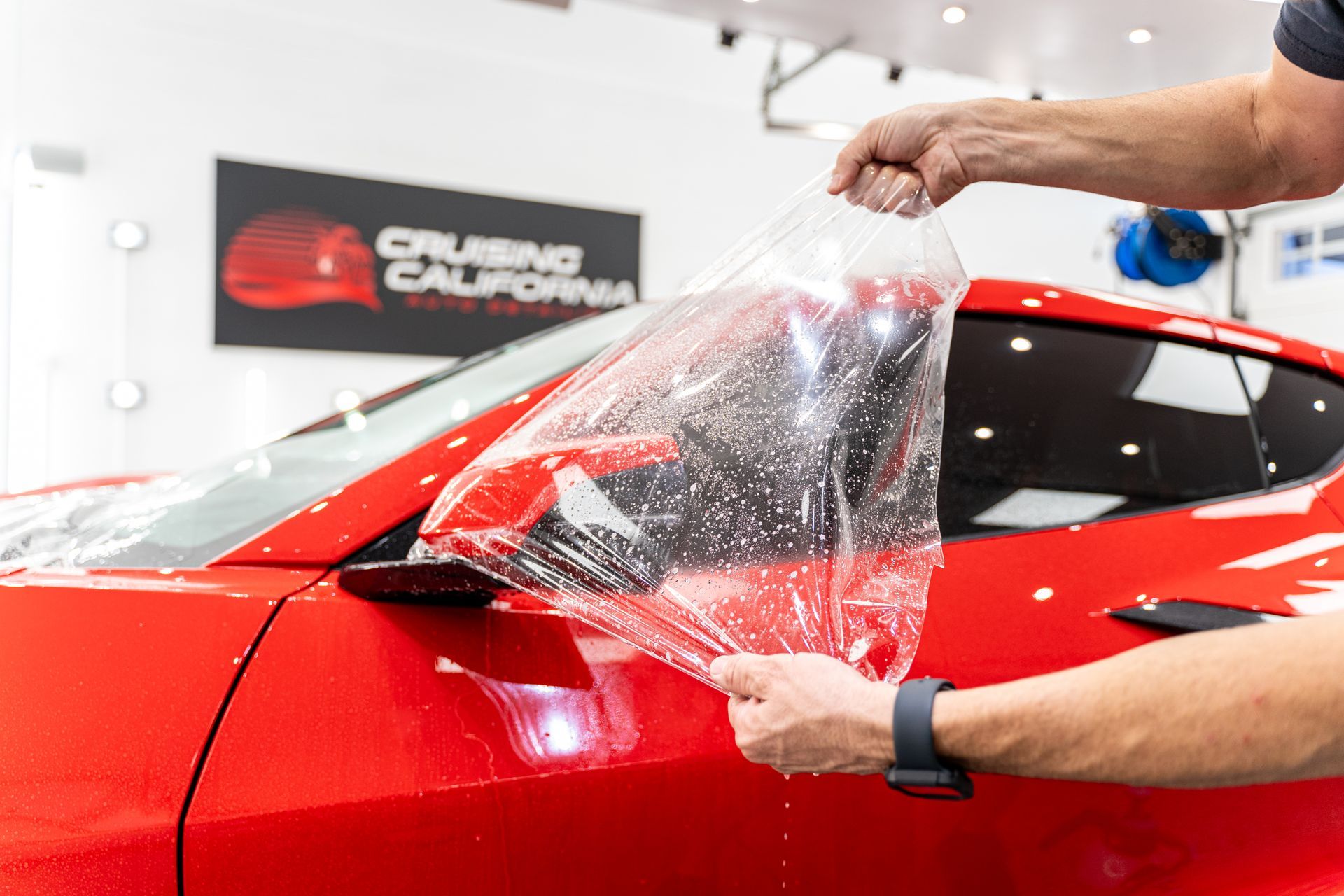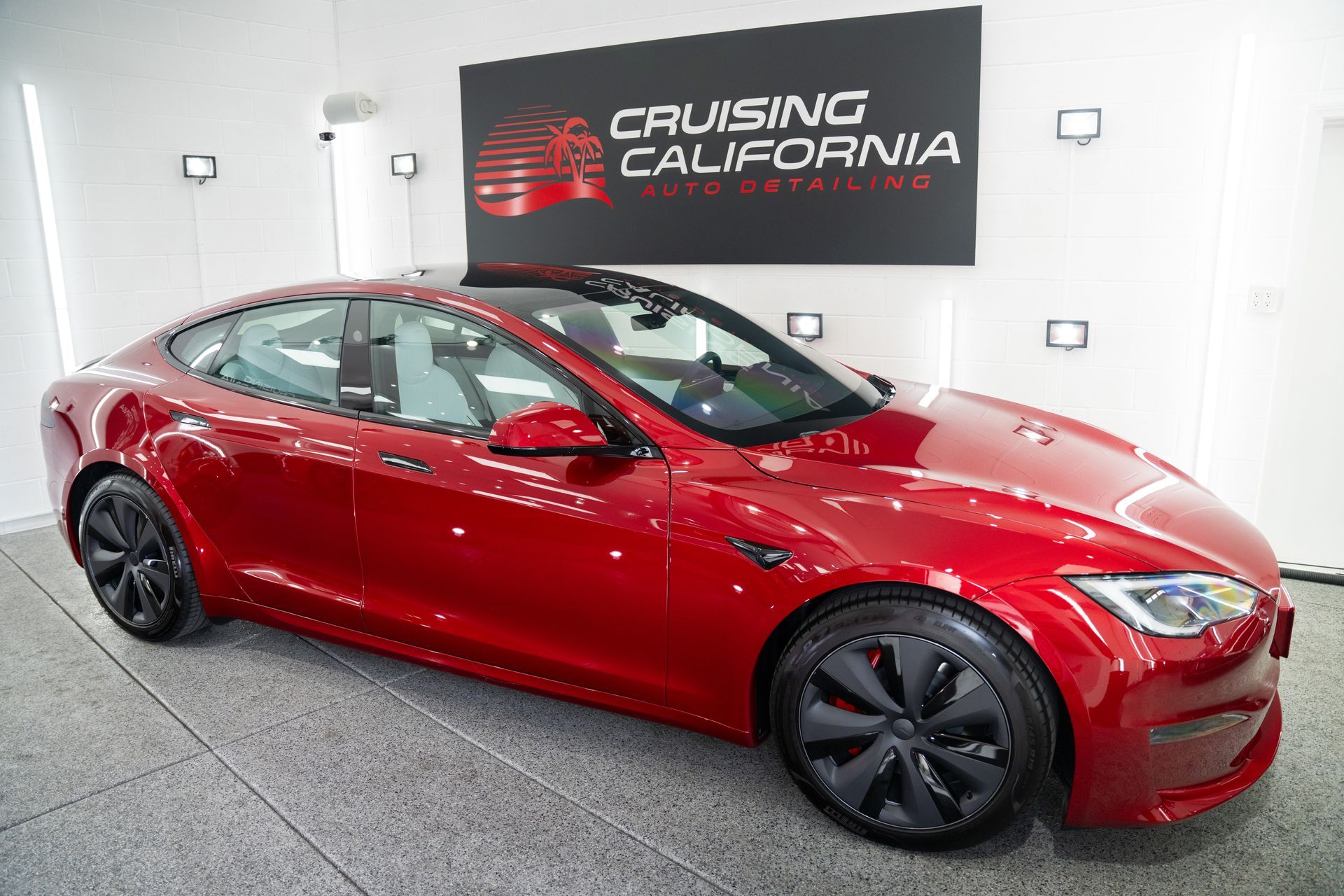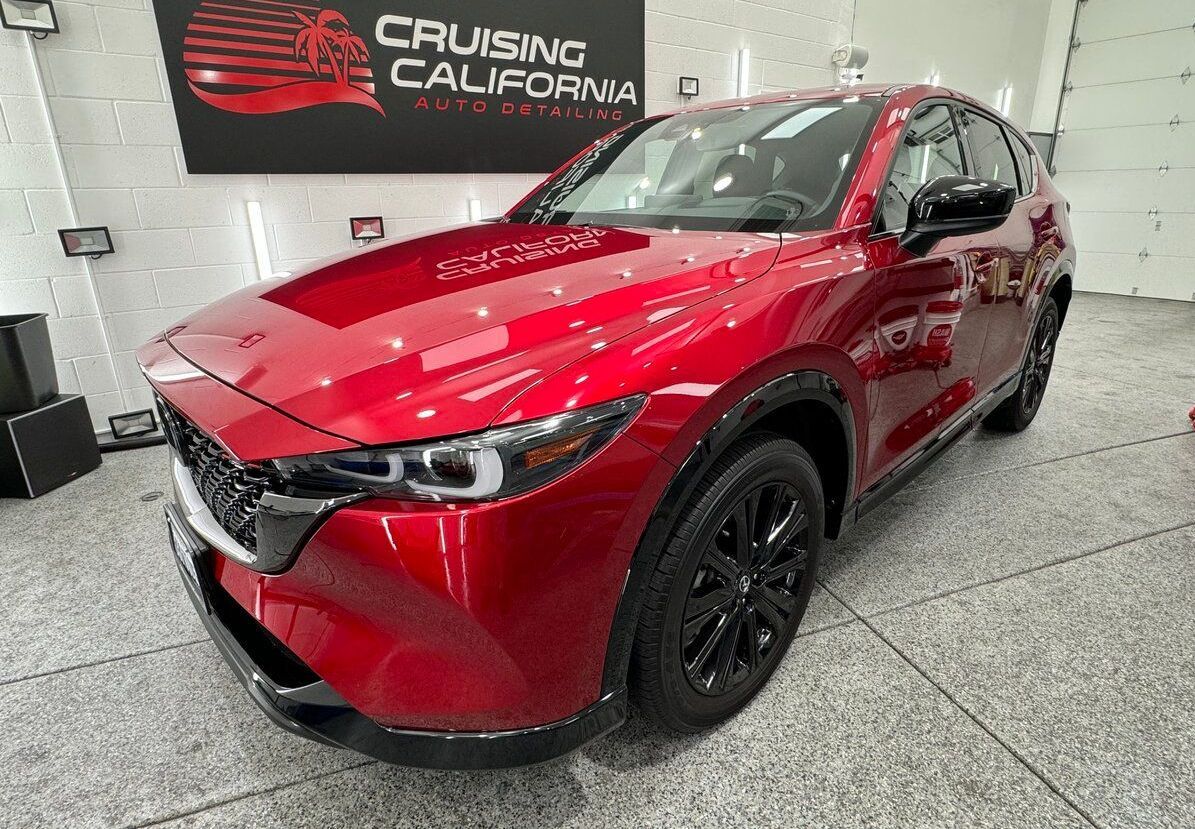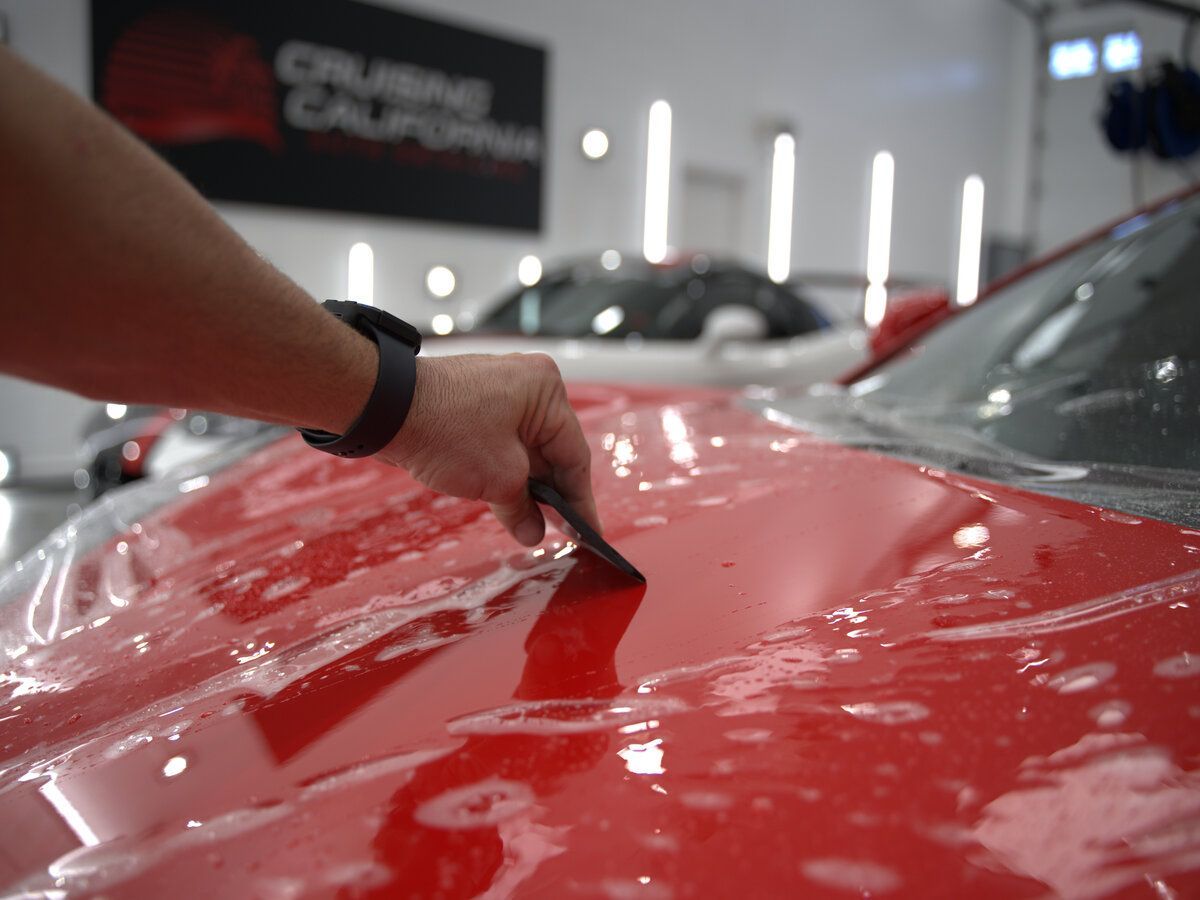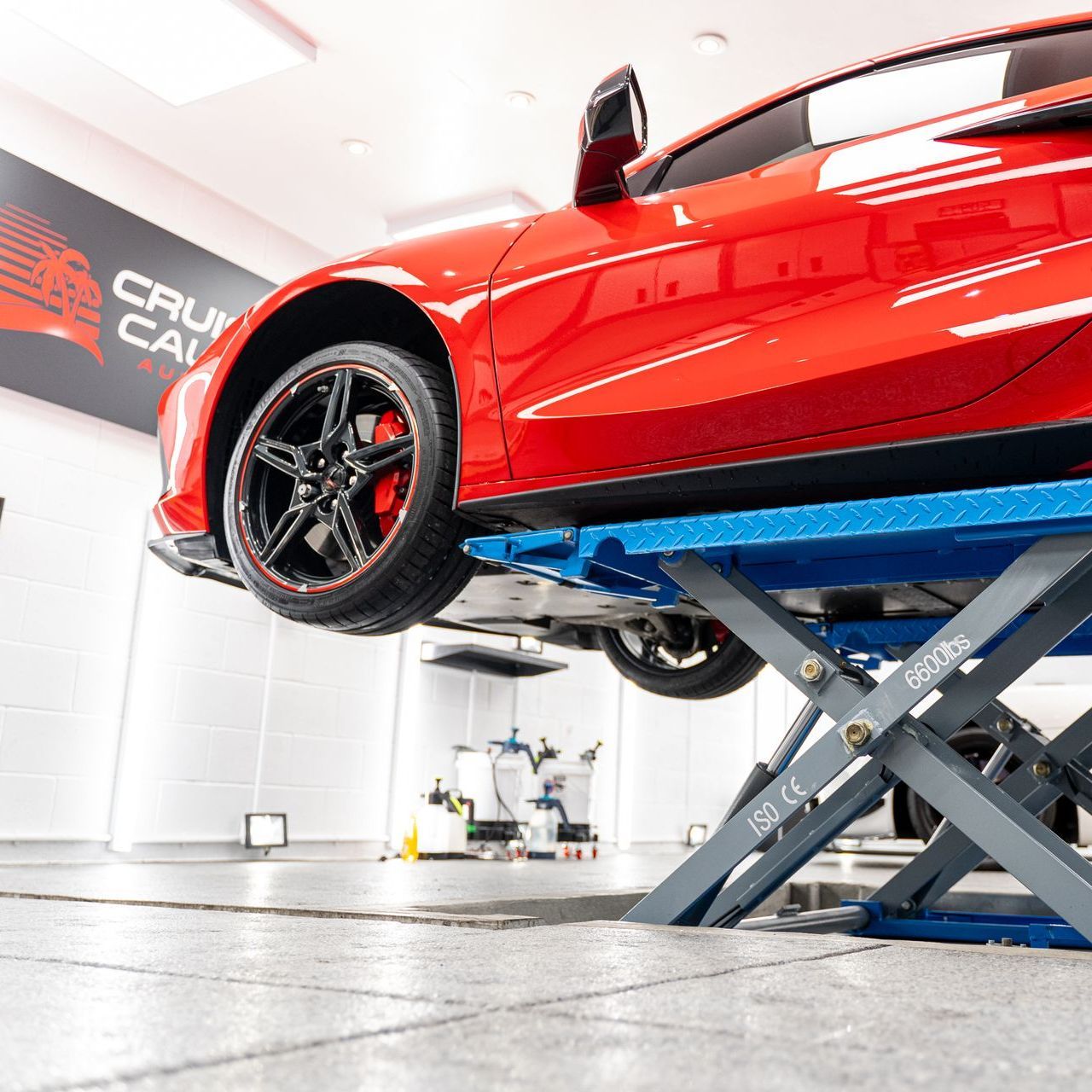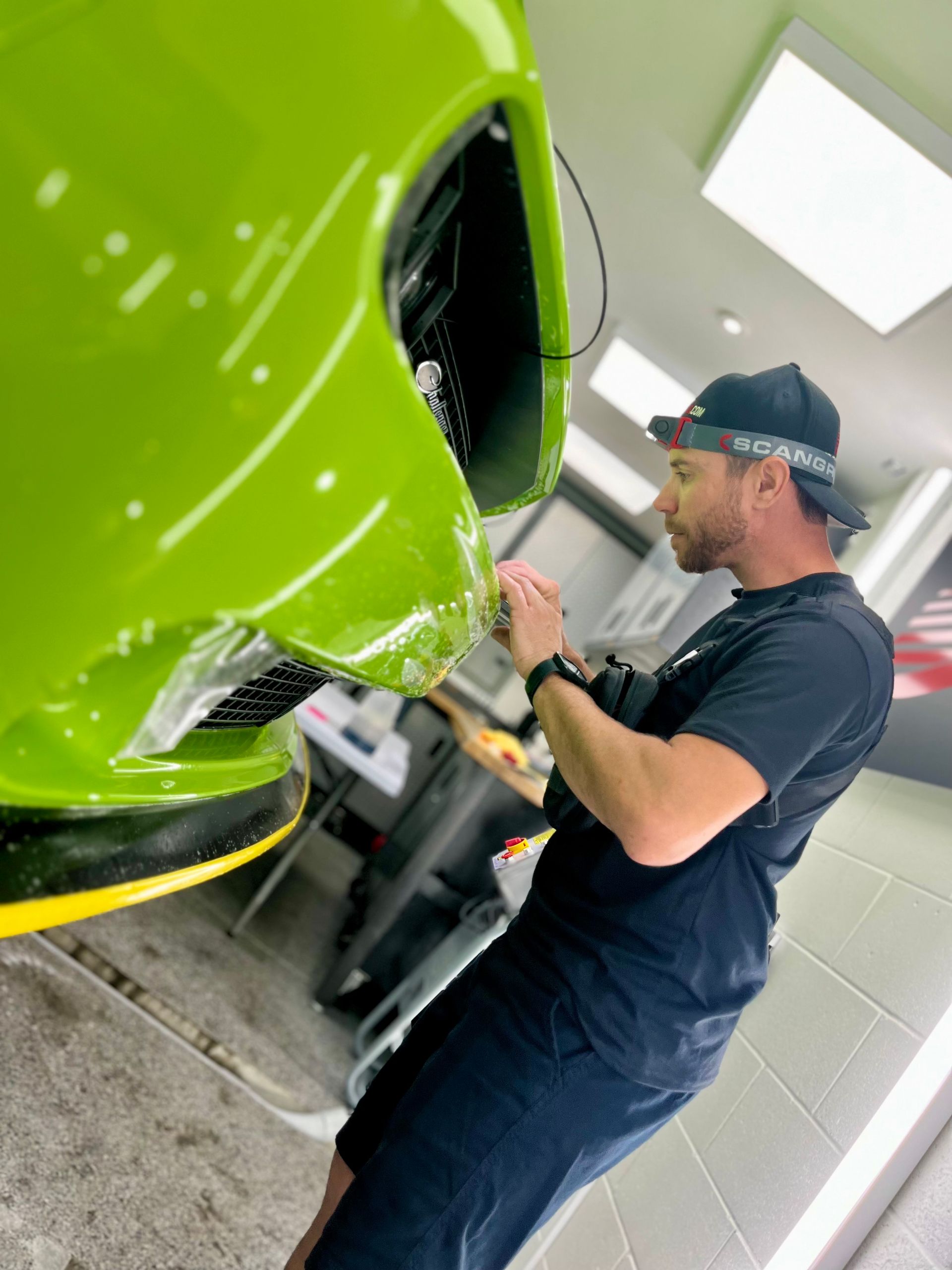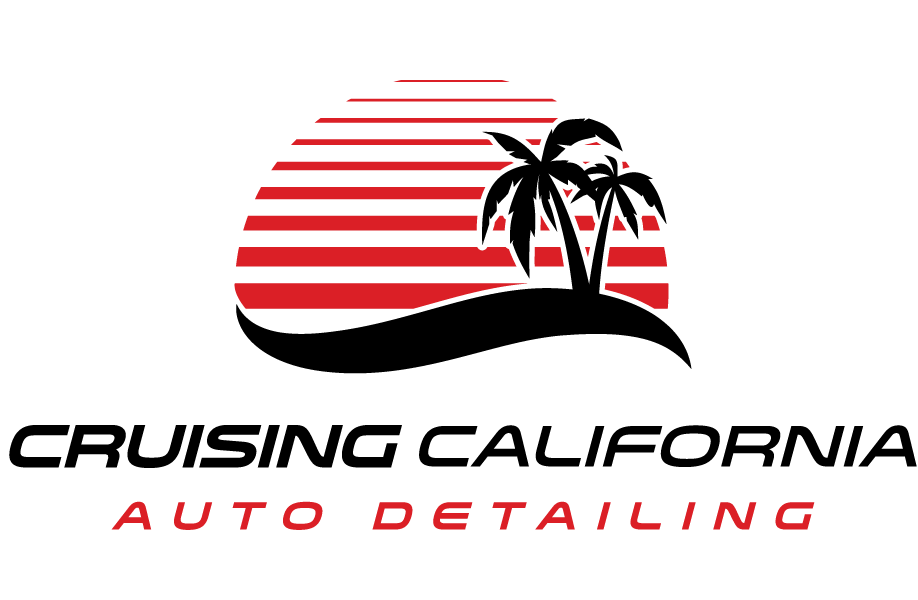Applying paint protection film to your car can be a crucial protective measure, especially in places like El Cajon. With PPF, your vehicle gets an extra layer of protection from small damages such as stone chips, minor scratches and dents. More than that, it shields the car's paint job from potential fading caused by the bright sun - a common occurrence in El Cajon. Even more intriguingly, some paint protection film varieties have self-healing capabilities that enable them to mend minor scratches when exposed to heat from the sun. So next time you park your car under the sweltering El Cajon sun, think about what a little bit of film can do for your ride.
El Cajon car owners should consider paint protection film as it provides a durable layer of protection against road debris, scratches, and UV damage, preserving the appearance and value of their vehicles. Additionally, PPF can help maintain the original paint finish, reducing the need for frequent touch-ups or repainting.
Pros and Cons of PPF
You've probably heard a lot about paint protection film or PPF—how it keeps your car looking pristine for longer. But, like anything, it comes with both good and not-so-good sides. Let's start with the positives—why do people opt for PPF in the first place?
Pros of Paint Protection Film
- Protection Against Small Damages: One of the most notable benefits of paint protection film is its ability to protect your car's paint from various types of harm. This film serves as a barrier against stone chips, scratches, and small dents that can naturally occur while driving. It's like an invisible shield, absorbing the impact so your car's body doesn't have to bear the brunt.
- UV-Ray Protection: The sun's rays can be harsh on your car's paint, causing it to fade over time. Paint protection film acts as a protective layer against UV damage, preserving your car's original color and finish. This benefit not only maintains the aesthetic appeal but also helps retain the vehicle's value in the long run.
- Self-Healing Properties: Some types of paint protection film are designed with self-healing capabilities, responding to heat exposure by repairing minor scratches. This feature is particularly appealing as it gives owners peace of mind, knowing that superficial damage can vanish with minimal intervention.
Cons of Paint Protection Film
- Cost: While the protective benefits are undeniable, it's essential to consider the financial aspect. The installation of high-quality paint protection film, especially for complete or full-body coverage, can come with a hefty price tag. It's an investment worth making, but it does require some upfront financial consideration.
- Installation Quality: The effectiveness and longevity of paint protection film largely depend on the expertise and precision of the installer. A subpar installation can compromise its protective qualities and may lead to visual imperfections that detract from the overall appearance.
So while there are indisputable advantages to PPF, including safeguarding your car from damage and weathering, there are cost-associated factors and considerations regarding installation quality that any prospective buyer should weigh before committing to this protective measure.
Impact of PPF on Vehicle Resale Value in El Cajon
When selling your car in El Cajon, a good resale value is paramount. You want to recoup as much as possible from your initial investment. Paint protection film plays a significant role in preserving the exterior of your car and can have a positive effect on its resale value. What's important to understand is that PPF acts as a shield for your car's exterior against road debris, small stones, and environmental hazards, which are quite common in El Cajon. This protection maintains the paint in good condition, preventing chips, scratches, and other damage that can devalue a vehicle over time.
A car that has been driven around El Cajon for several years without paint protection film will likely exhibit visible wear and tear on its front end due to constant exposure to road debris. On the other hand, a similar car with PPF might show minimal signs of damage. Potential buyers are more likely to notice this difference and often feel more inclined to pay a higher price for a car that looks newer and is well-maintained. So, when you're considering whether or not to invest in PPF for your car in El Cajon, remember that it not only protects your vehicle from damage but also contributes to maximizing its resale value. It's an investment that pays off down the road when it comes time to sell or trade in your car.
Enhanced Appearance: A Paint Protection Film Benefit
When aiming to preserve the beauty of your car's exterior, paint protection film stands out as a game-changer. Imagine a shield that's virtually invisible yet effectively safeguards your car from scratches, chips, and other minor damages. With PPF, your vehicle's original paint color, gloss, and finish can be preserved, creating a lasting impression of a well-maintained and visually appealing exterior. The beauty of PPF lies in its ability to act as an additional layer of protection for your car's paintwork. It shields the vehicle from the everyday wear and tear caused by road debris, gravel, insects, and small rocks that could otherwise mar the surface. Think of it as insurance for your car’s paint—a barrier that keeps it looking as good as new.
PPF also provides a safeguard against two major enemies of paint: UV rays and oxidation. It not only preserves the shine and brilliance of your car's exterior, but it also guards against color fading brought on by extended exposure to sunlight. In essence, it's like having a protective shield against the elements. Imagine driving through El Cajon with a vehicle that looks just as dazzling as it did when it rolled out of the showroom. That’s precisely the visual impact paint protection film can have on your car. Plus, since it’s nearly invisible when professionally installed, you get to enjoy the heightened aesthetics without altering the original design or beauty of your vehicle.
Let's not forget about the peace of mind that comes with knowing your car's appearance is in safe hands. Whether you're cruising around town or parked outdoors under the scorching sun, PPF acts as an effective barrier against environmental factors attempting to dull your car's shine. The benefits of PPF extend far beyond pure aesthetics; it's about preserving and enhancing your car's appearance for years to come.
Maintenance: How PPF Reduces Effort and Cost
We all desire our cars to look their best, but maintaining that shine can be a time-consuming and expensive process. This is where paint protection film steps in to make life easier for El Cajon car owners. PPF acts as a protective shield against scratches, chips, and other imperfections that require frequent attention and touch-ups. Imagine PPF as invisible armor guarding your car's paintwork against everyday wear and tear. The PPF absorbs the impact of road debris, gravel, and minor abrasions instead of harming your car's actual paint. This means fewer visits to the auto body shop and a significant reduction in the need for frequent paint touch-ups.
Additionally, paint protection film's resistance to dirt buildup simplifies the cleaning process. The hydrophobic nature of the film repels dirt and grime, making it easier to wipe off and requiring fewer washes. While car detailing and frequent washes have their place in preserving a vehicle's appearance, the need for them is significantly reduced with the presence of PPF. It serves as a shield not only against physical damage but also against environmental factors that contribute to wear and tear, ultimately saving you time and money.
Think about the time-consuming hassle of having to scrub off stubborn bird droppings or bug splatters from your car's exterior. With a paint protection film in place, these issues become far less challenging to address, keeping your car looking clean with minimal effort. This proactive approach to maintenance not only streamlines your cleaning routine but also diminishes the frequency of professional detailing services. By limiting exposure to harsh chemicals and abrasives used in traditional detailing processes, PPF helps maintain your car's original luster over time. In summary, the installation of paint protection film not only ensures protection against physical damage but also simplifies the ongoing upkeep of your vehicle by reducing the need for frequent paint touch-ups, detailing services, and car washes.
Initial and Long-Term Costs of Paint Protection Film in El Cajon
Considering paint protection film for your car in El Cajon requires a clear understanding of the costs involved. The initial cost of PPF installation would depend on various factors, such as the size of your vehicle, the type of film you choose, and the area you want to cover. For instance, larger vehicles like trucks or SUVs will naturally require more material and labor, leading to higher installation costs compared to smaller cars. Additionally, optically clear, high-quality paint protection films designed to provide comprehensive coverage for the entire body of the car typically come at a premium price due to their advanced protective properties.
While these initial costs may seem steep, especially for full-body applications with top-tier films, it's crucial to consider the long-term benefits. PPF acts as a shield against various types of damage, including scratches from road debris, rock chips, UV rays, and even environmental hazards such as bird droppings or tree sap. By absorbing the impact of these elements, a paint protection film prevents them from reaching the car's original paintwork. This protective barrier ensures that your vehicle maintains its pristine appearance for an extended period without suffering from unsightly blemishes or color fading caused by prolonged exposure to the sun.
By investing in PPF up front, you can avoid paying for ongoing touch-up paint jobs or complete repainting due to damage from chips and scratches. Over time, the savings gained from not having to address constant paint damage easily offset the initial installation costs. It's similar to preventive health measures. Regular exercise and a balanced diet may seem like investments in time and resources initially, but they ultimately translate into long-term savings by reducing medical bills and improving overall well-being. Understanding both the initial and long-term costs associated with PPF allows you to make an informed decision regarding its installation, ensuring that you're considering not just immediate expenses but also future savings and protection for your vehicle.
Premium-Grade Paint Protection Film Solutions in El Cajon, CA
Seeking top-tier protection for your vehicle's paint? Turn to CCA Detailing & Ceramic Coating | PPF in El Cajon, CA, for
premium-grade paint protection film solutions. Our advanced PPF not only safeguards your car's exterior from chips, scratches, and road debris but also ensures a seamless, virtually invisible finish. Bid farewell to worries about damage and hello to a lasting, pristine appearance. Trust our expertise and commitment to quality to preserve your vehicle's beauty for miles to come. Book your appointment now and experience the difference firsthand! Call us at
(619) 916-6157 today to get started!

